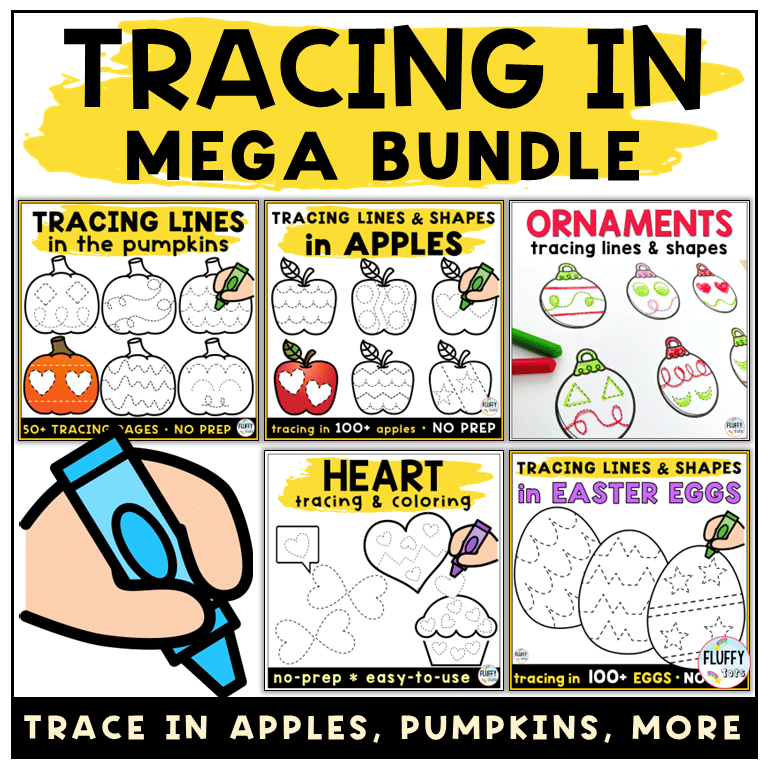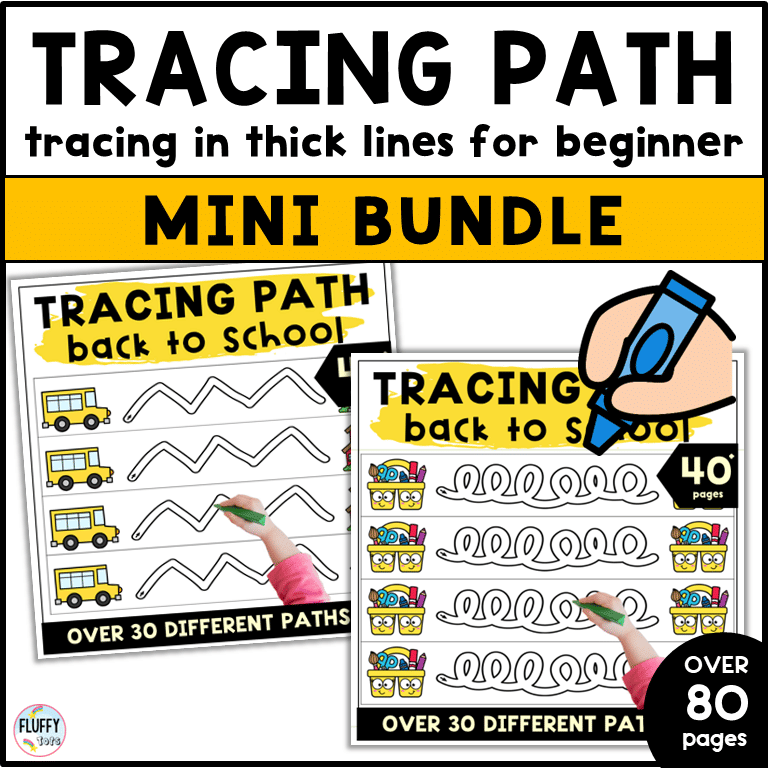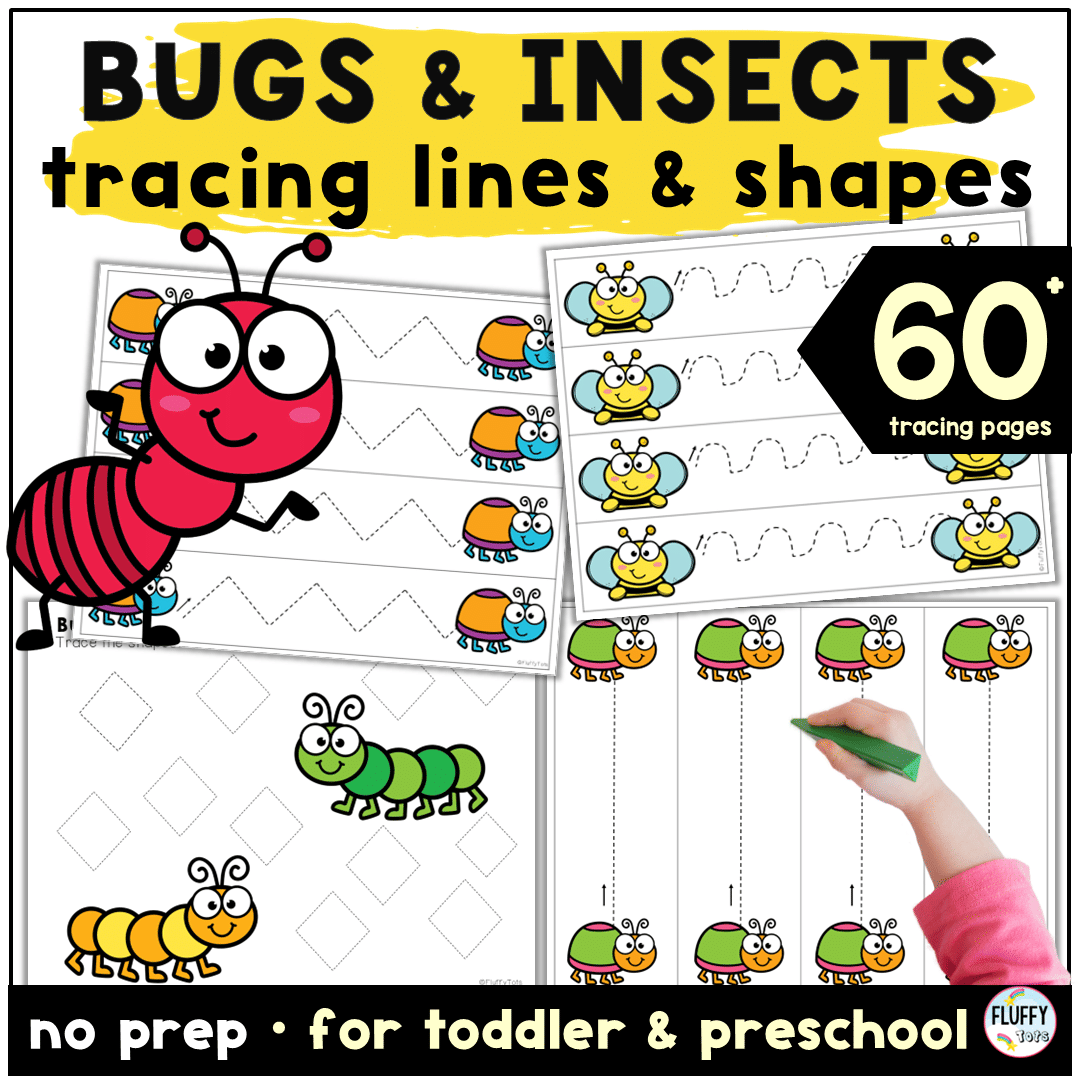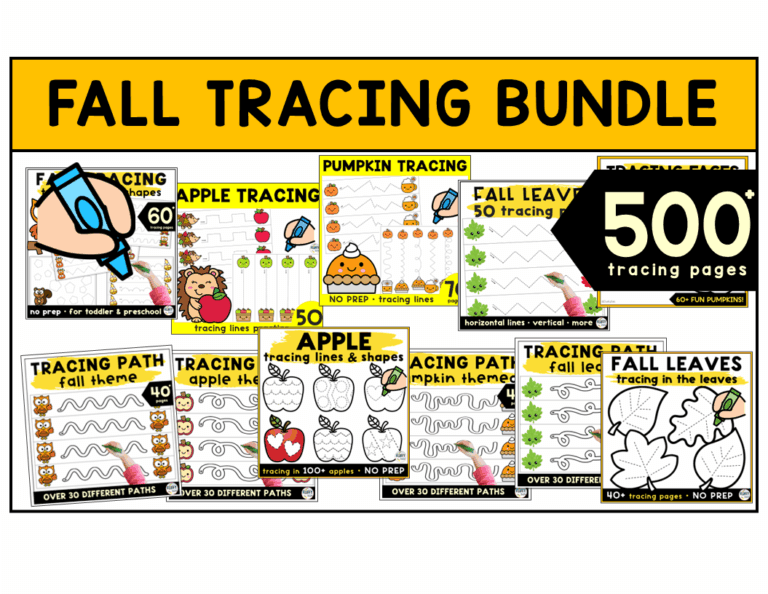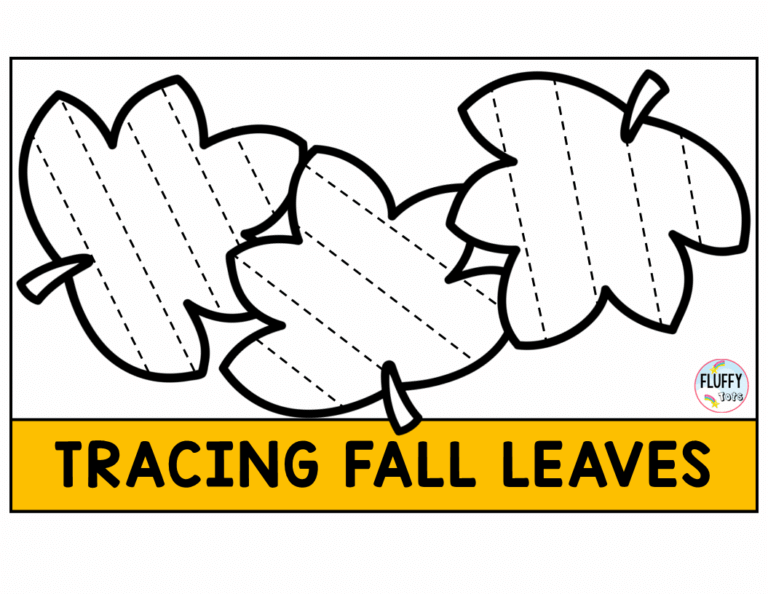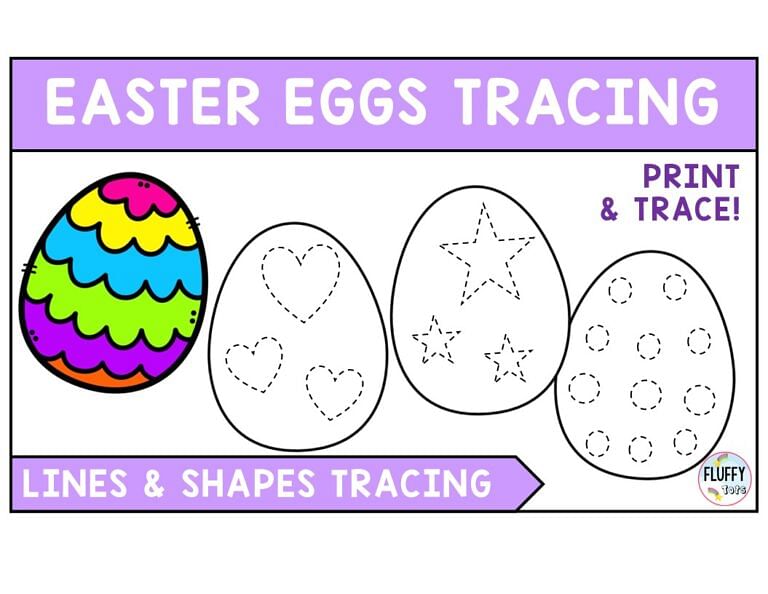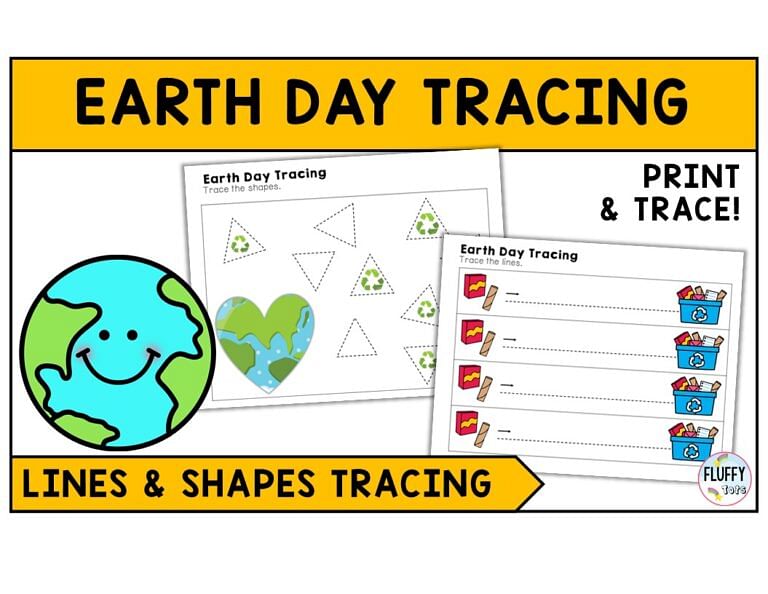5 Steps How to Teach Tracing Lines in Preschool to Build Strong Handwriting Foundations (with low prep Printables)
Ever wonder how to teach tracing lines?
Pre-writing tracing skills are essential foundations your little ones need before they can write alphabet letters, numbers, or even their own names. But how do you teach tracing? Where should you start?
This guide is based on my personal experience teaching preschoolers, and I’m sharing the exact progression that works.
Step 1: Build Hand Strength First
Before your child can hold a crayon and trace a simple line, they need the hand strength to grip that crayon properly.
Help strengthen those tiny hand muscles through:
- Rolling and squeezing playdough
- Using tongs to pick up pom poms
- Peeling and placing stickers (yes, those free grocery store stickers are perfect!)
These activities build the pincer grip and hand strength needed for holding crayons and pencils later.
Step 2: Start with Tracing Short Strokes
Every big accomplishment starts with small steps—and pre-writing skills are no exception.
Before diving into long straight lines or curves, begin with simple, short strokes. And because tracing practice can feel mundane, make it fun with themed activities!
In my Apple Tracing Pack, kids trace lines inside apples—pretending they’re decorating them.
Or print Leaves tracing from Tracing Bundle below – let them trace patterns on leaves using just a few short strokes. When tracing feels like play, kids stay engaged.
Step 3: Tracing IN Thick Lines
I noticed my kids struggled with tracing on thin dotted lines. That’s when I discovered the power of thick-lined tracing.
Why does tracing in thick lines work better for beginner:
- Thick lines provide more visual guidance for little eyes
- Children can clearly see where their hand is moving
- The wider space gives them room for imperfect motor control
- Arrows at the starting point teach left-to-right directionality
Let your students master tracing inside thick lines before moving to dotted lines.
Step 4: Progress to Tracing on Dotted Lines
Once your learners are comfortable with tracing short strokes and tracing in thick lines, introduce tracing on dotted lines.
Follow this progression:
- Simple straight lines (vertical and horizontal)
- Castle lines (step patterns)
- Diagonal lines
- Curved lines
- Basic shapes
Keep tracing exciting with these twists:
- Seasonal themes: Gingerbread tracing in winter, pumpkins in fall, Bugs in spring
- Rainbow tracing: Use a different color for each line
- Q-tip painting: Laminate the page and let them paint the lines with Q-tips!
Step 5: Tracing Letters, Numbers, and Names
After mastering all the foundational strokes, your students are finally ready for the main event—tracing letters, numbers, and their own names!
Teaching tracing is a journey, but with themed activities and creative twists, your kids will be asking for “just one more tracing page!”
If you’re looking for a complete tracing progression that covers all these steps, check out my Tracing Bundle. You’ll get tracing short strokes activities, tracing in thick lines, and tracing on dotted-line practice—all organized to follow this proven sequence.
Happy teaching!


